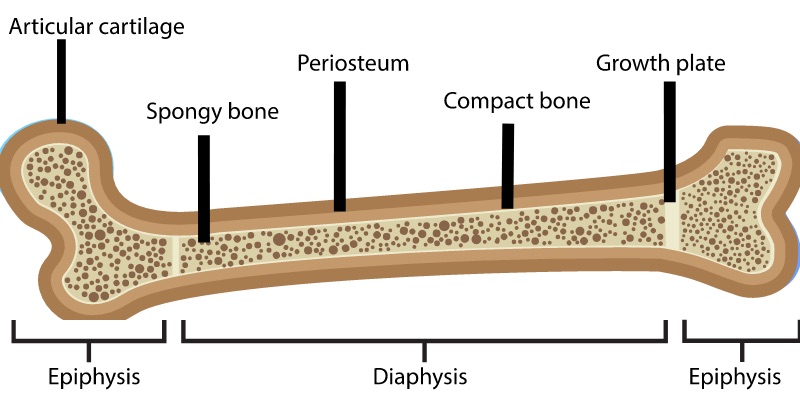
The epiphyseal plate aka “growth plate” is the area of new bone growth near the ends of the long bones in children/adolescents. Long bones include: the femur (thigh), the tibia and fibula (shin), the radius and ulna (forearm), and the bones of the hands and feet. There is typically one growth plate at each end of a long bone. As your child ages and grows, the growth plates harden and become solid bone. Once this process is complete, the growth plate is closed and no additional growth occurs. Growth plates usually close near the end of puberty (13-15 years for girls and 15-17 years for boys) [1].
Clinically speaking, the growth plates are the weakest areas of a child’s growing skeleton. Therefore, they are susceptible to injury. Common injuries to the growth plate include fractures and overuse/repetitive stress. Fractures to the growth plate can result from a specific trauma (eg – fall, collision during sports). Overuse injuries involve repeating the same movement over and over again (eg – throwing, jumping, running). Several syndromes such as Little League elbow, Osgood-Schlatter disease, and Sever’s disease involve chronic, repetitive stress. Most growth plate injuries heal and do not affect future bone growth.
Symptoms of a growth plate injury include: pain, tenderness, difficulty moving the joint/limb, difficulty with weight-bearing, and swelling. A doctor can diagnose a growth plate injury by taking a history, performing a physical exam, and having diagnostic images taken (eg – x ray, CT, MRI).
Treatment of non-displaced growth plate fractures/injuries often involve immobilization by placing the injured limb in a cast or splint and avoiding placing any pressure through the injured area. For a displaced fracture where the ends of the injured bones are not in proper alignment, the doctor can manipulate and “set the bones” back in the correct position. In some cases, surgery is required to insert screws or wires to hold the growth plate in place. Following manipulation or surgery, a cast is worn until adequate healing occurs. Once the fracture has healed, physical therapy can assist with restoring range of motion, flexibility, strength, and stability of the affected region.
If you have questions or would like to learn more about this topic, contact the therapy professionals at ProActive Physical Therapy and Sports Medicine for help.
[1] KidsHealth.org

